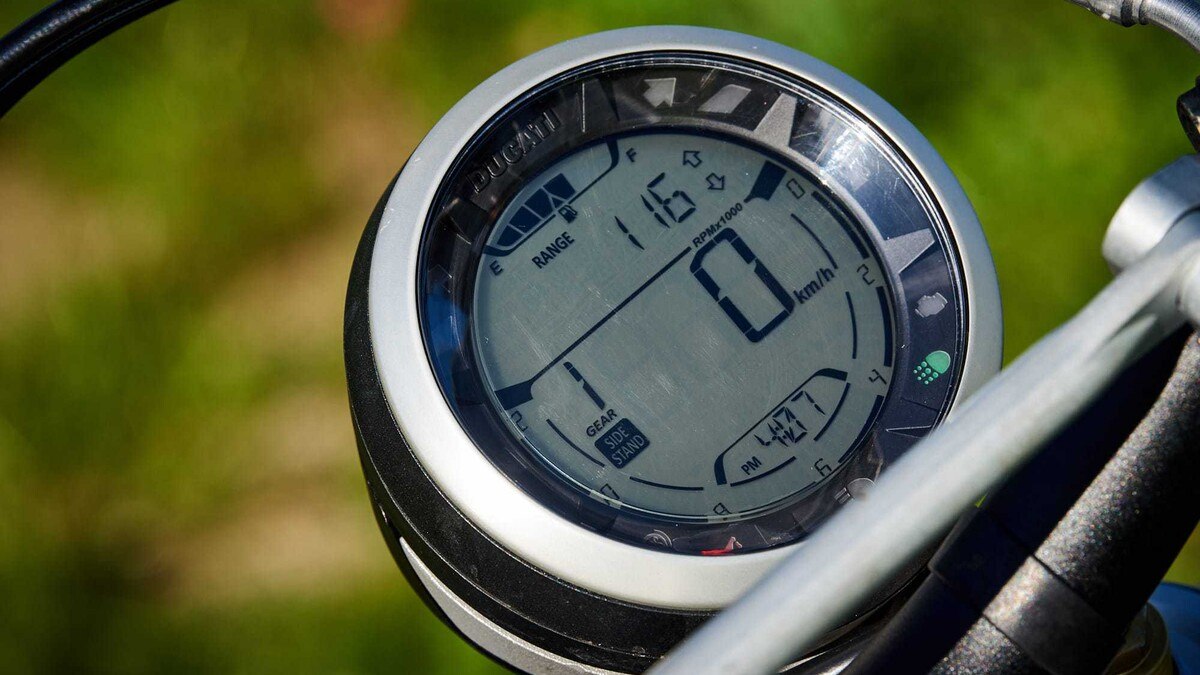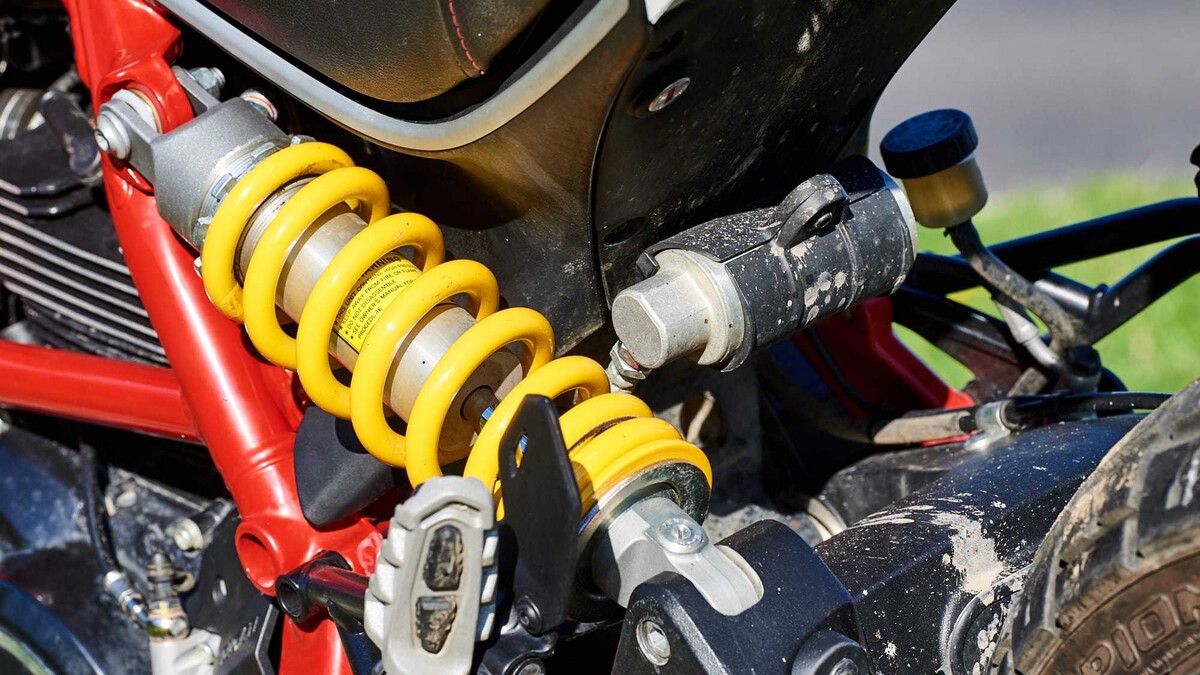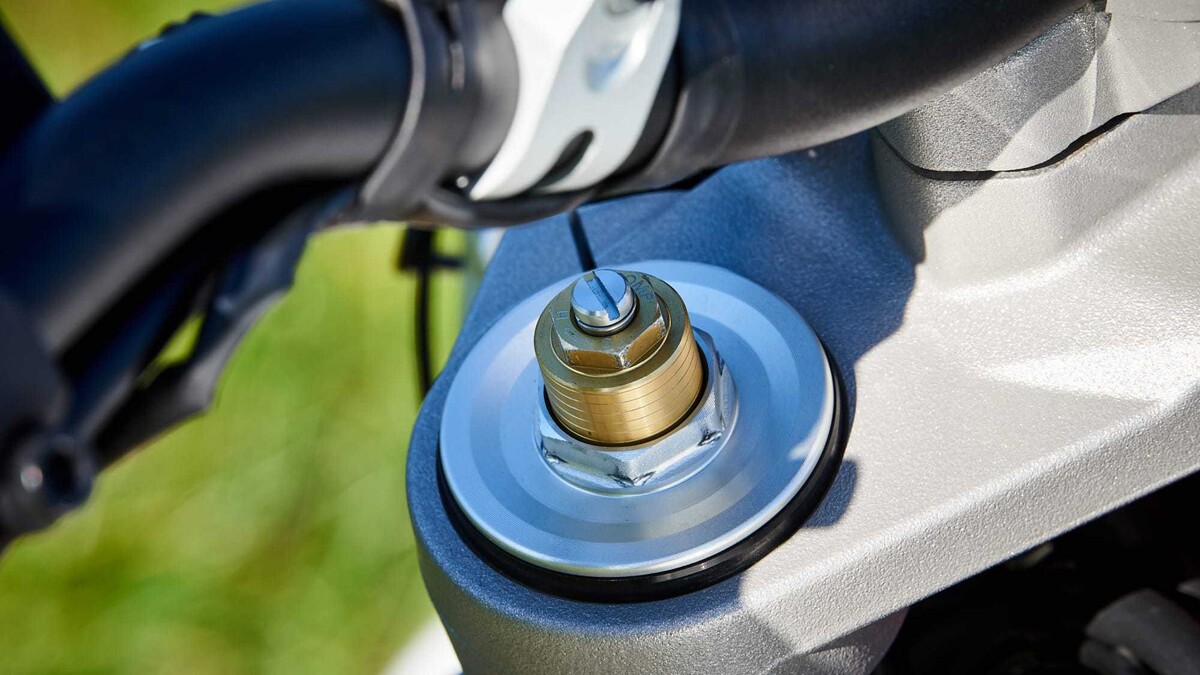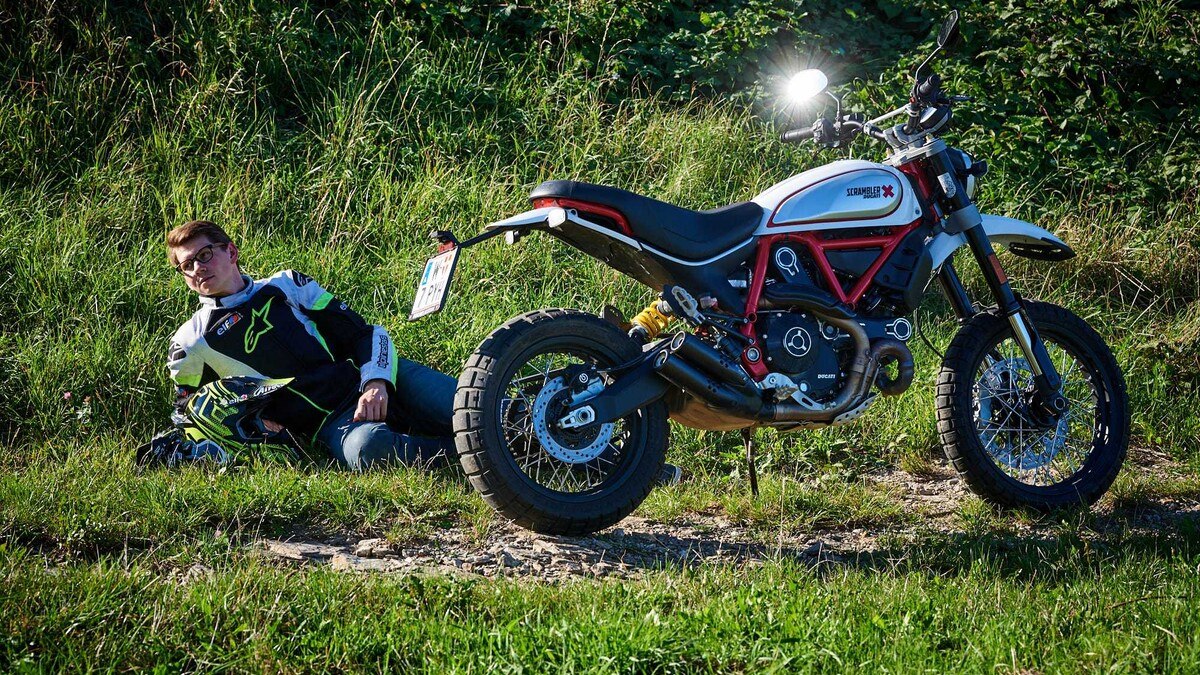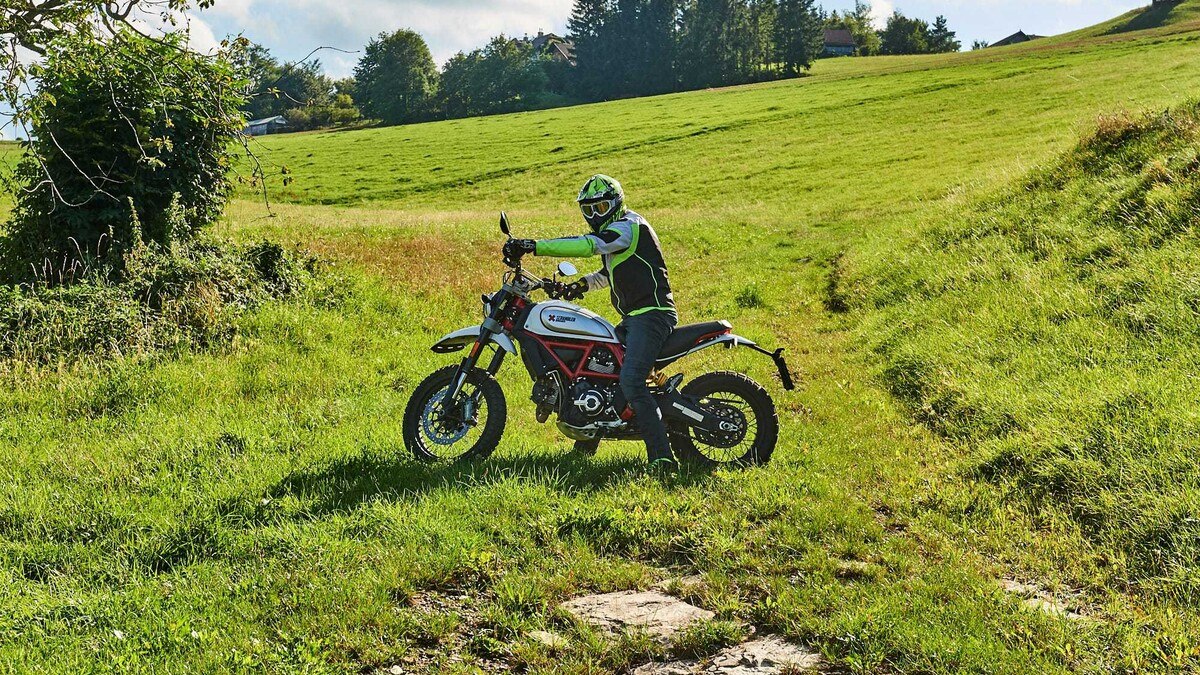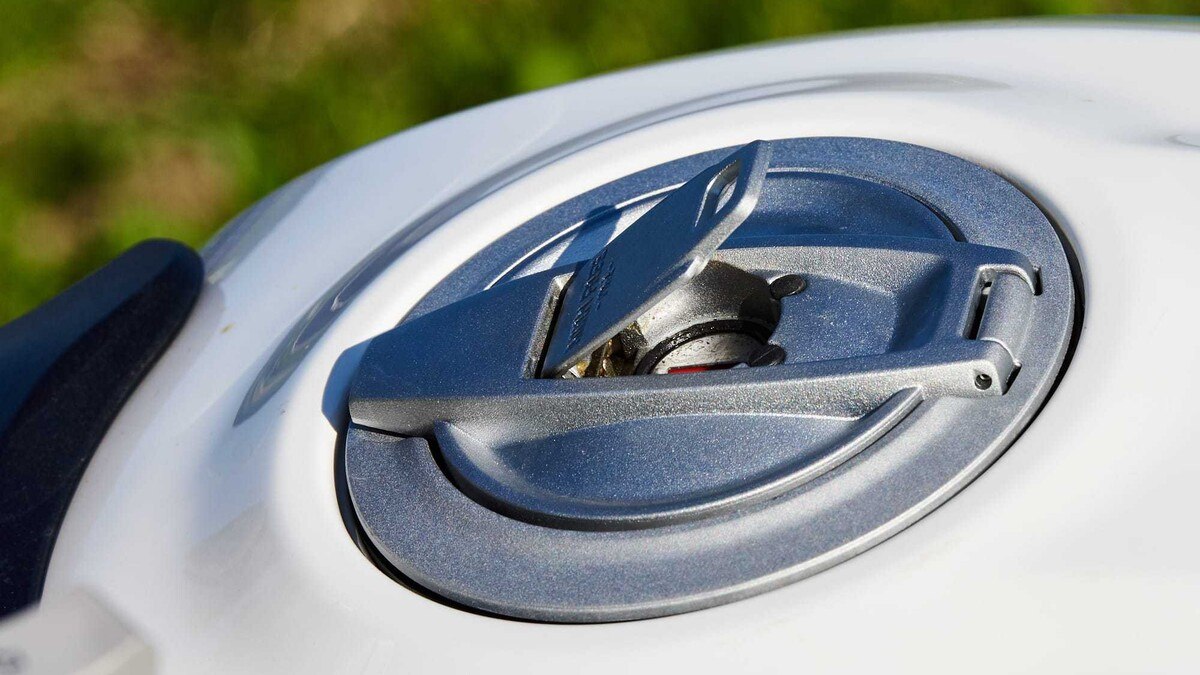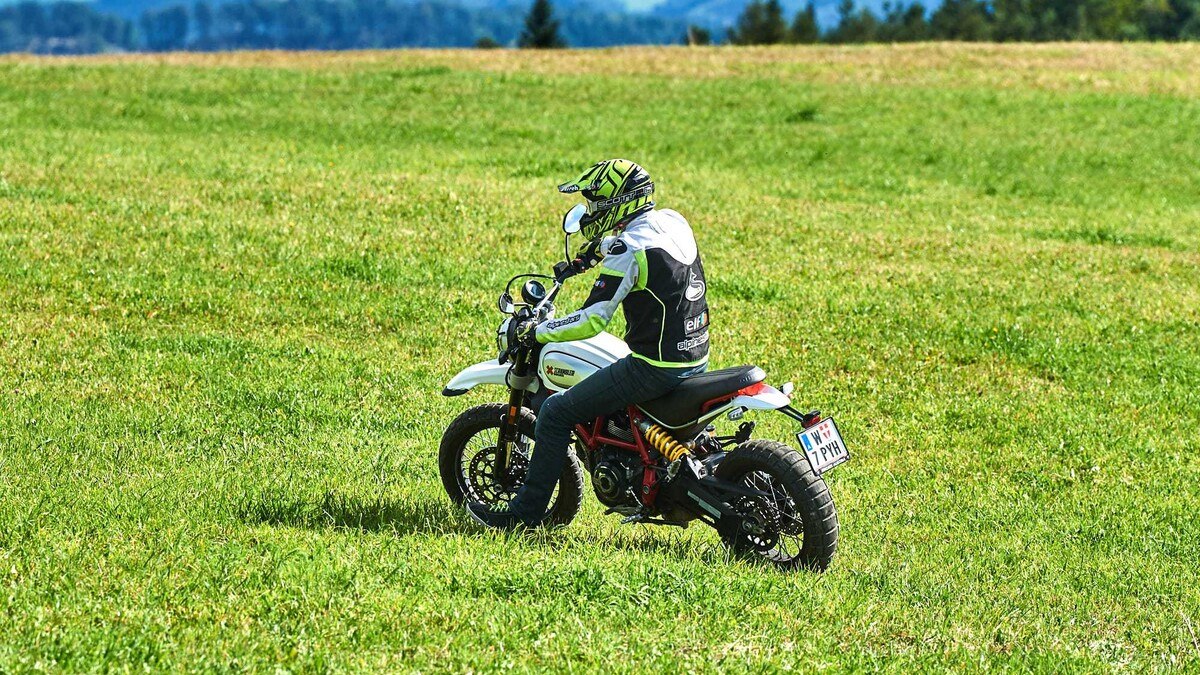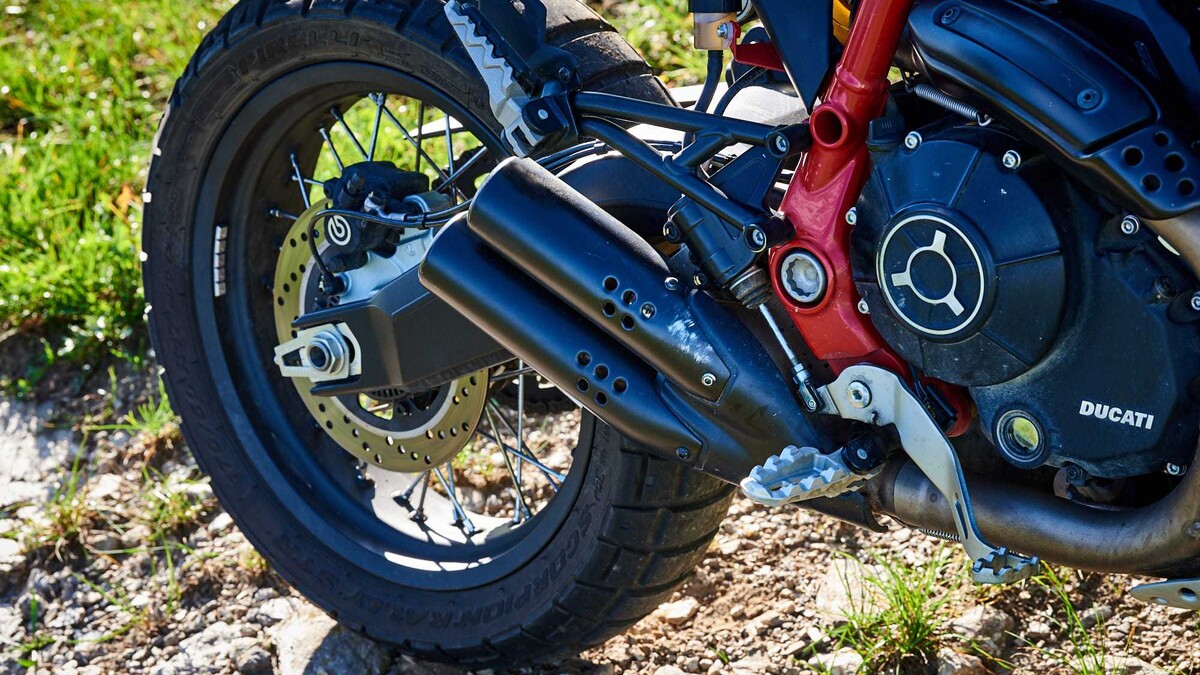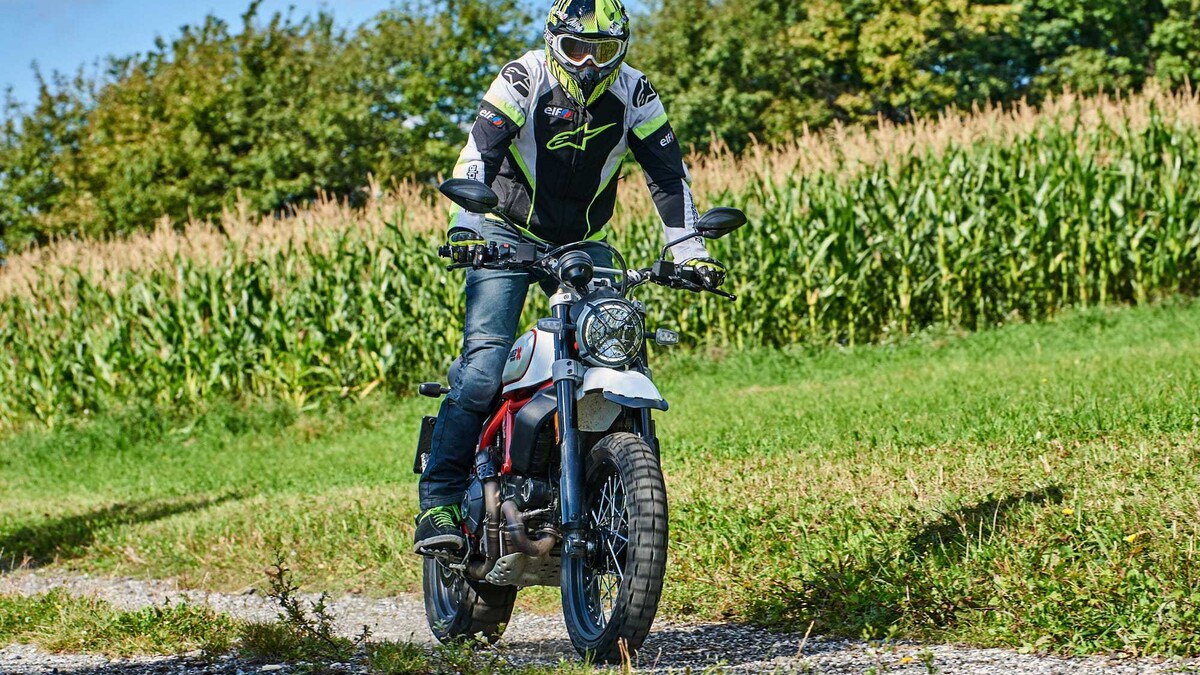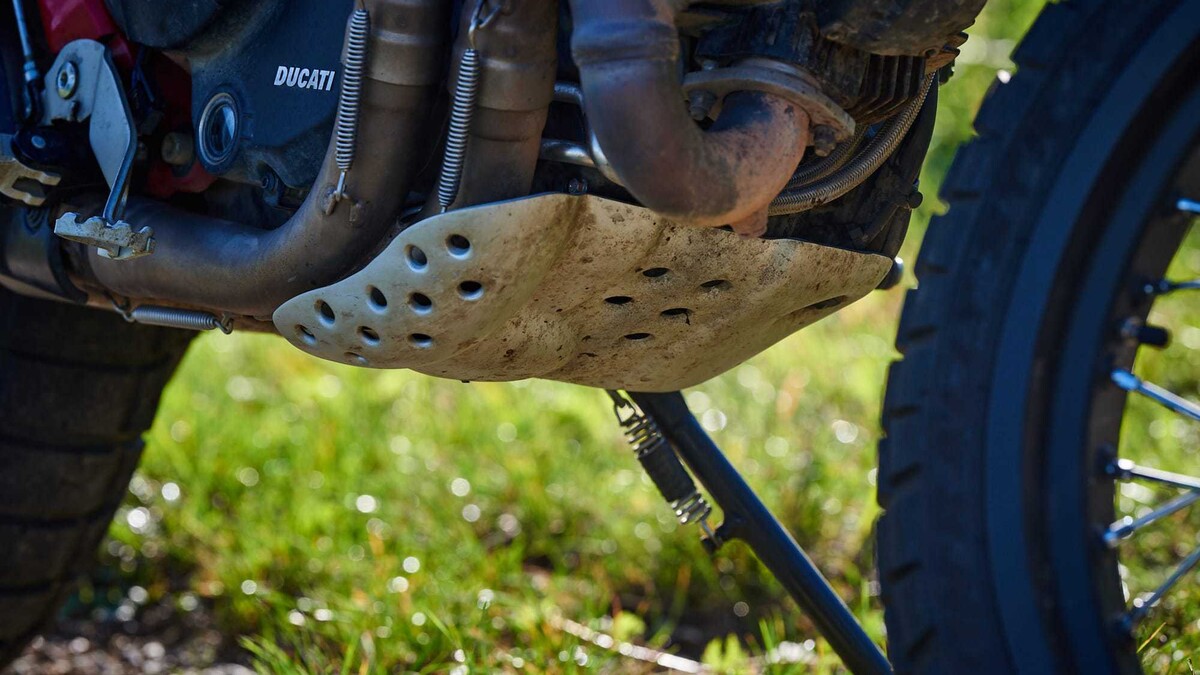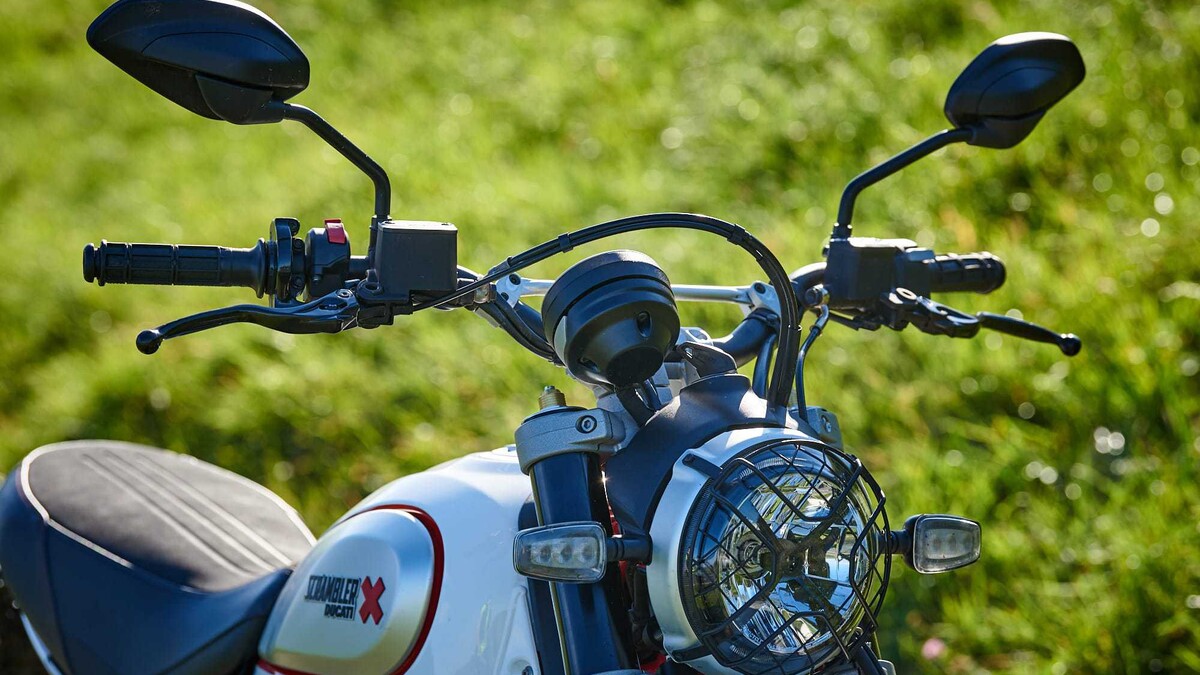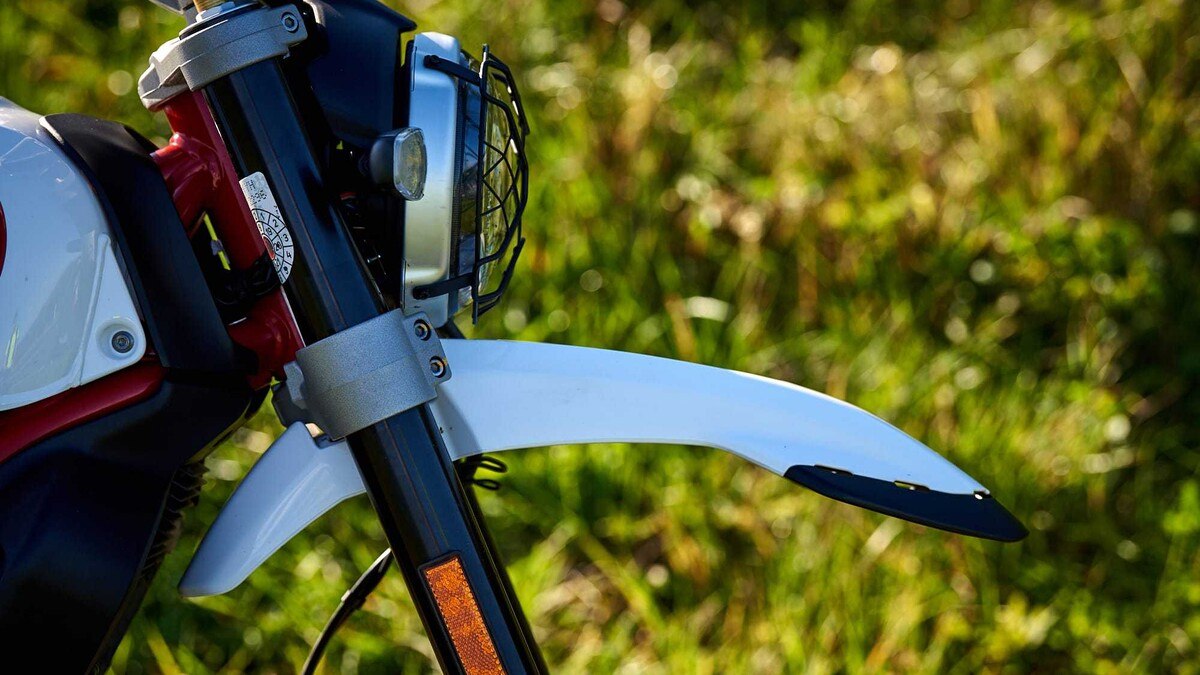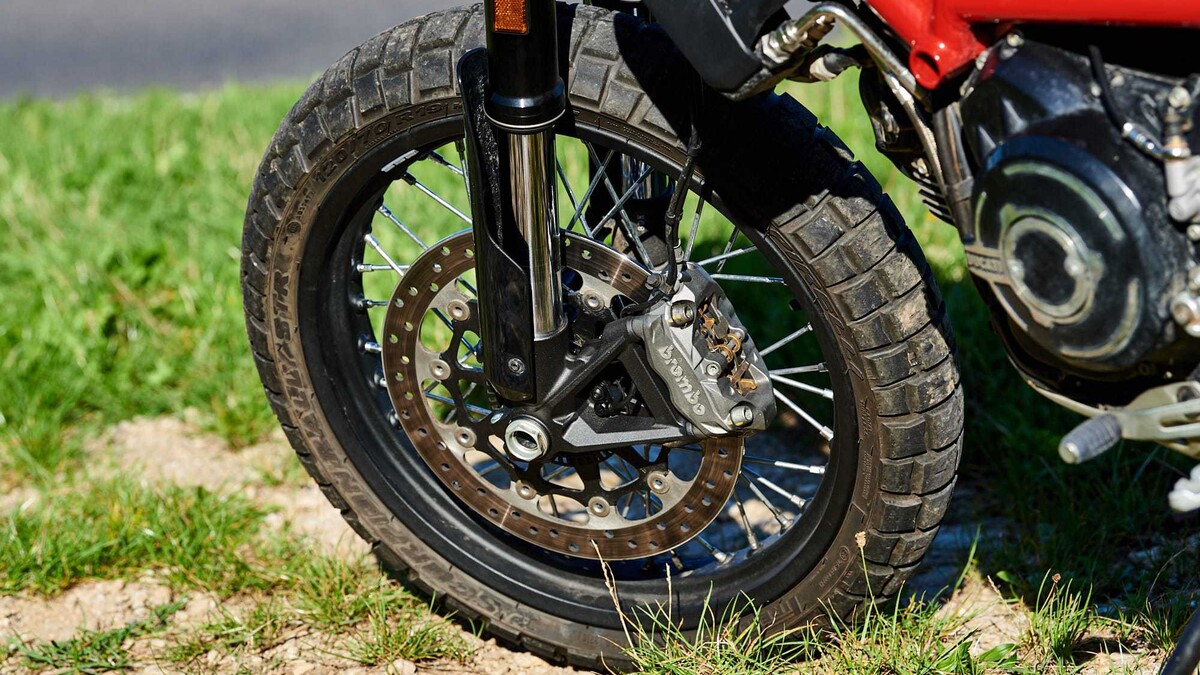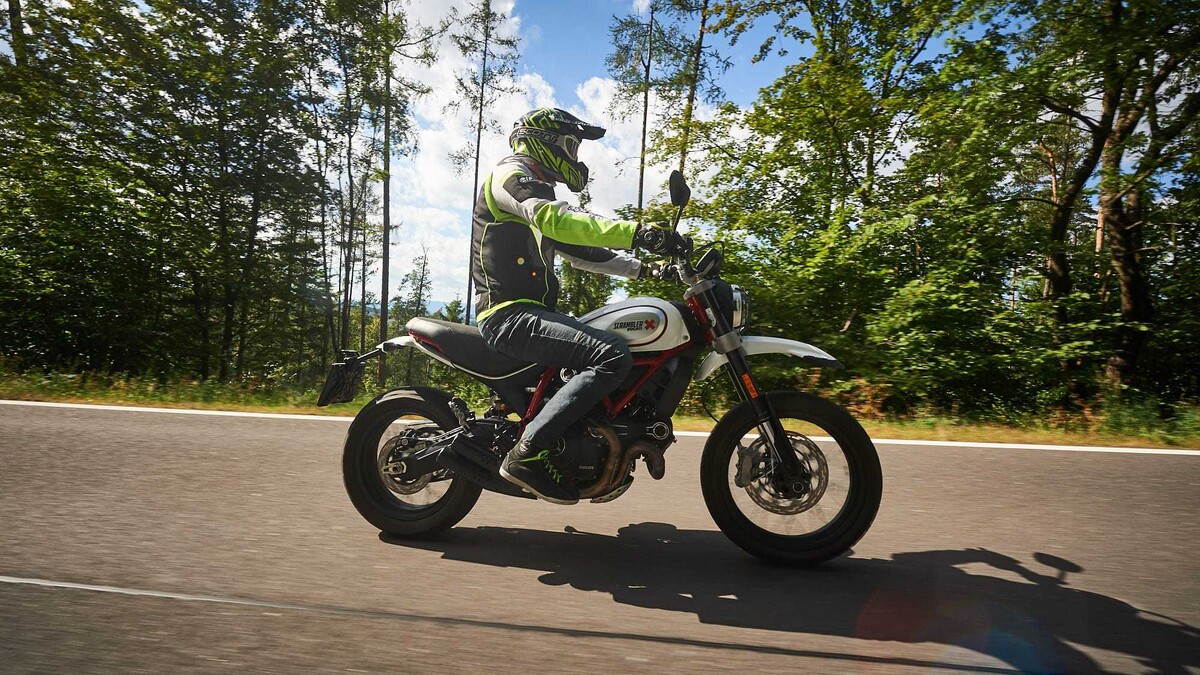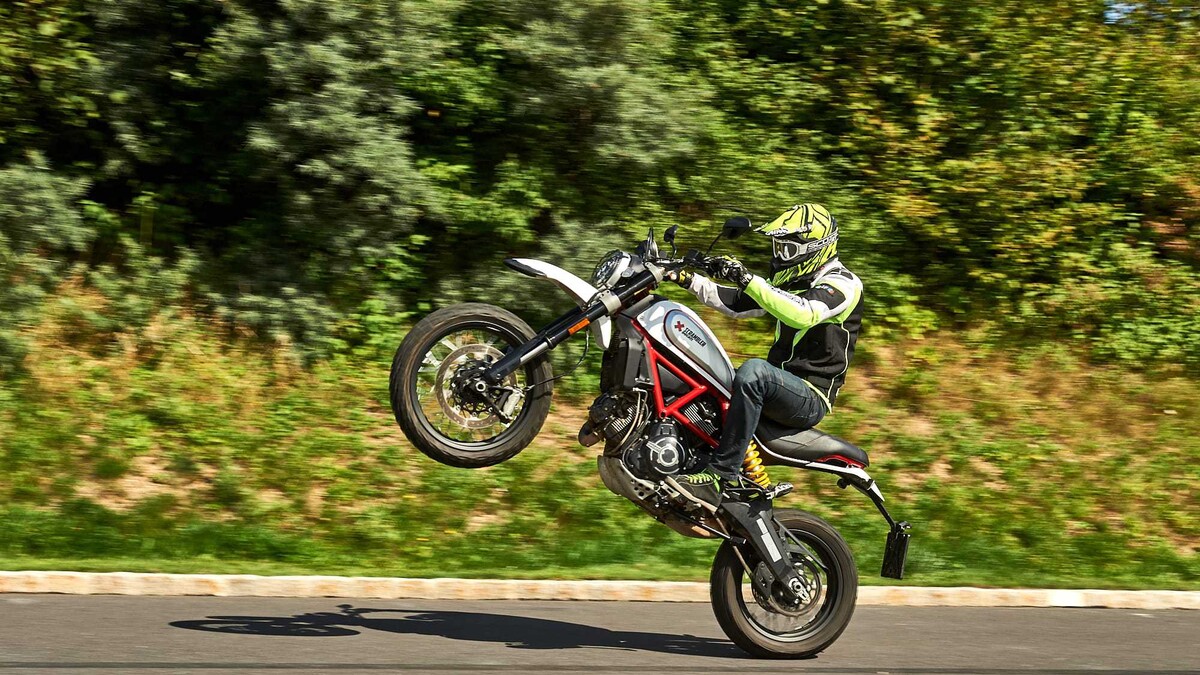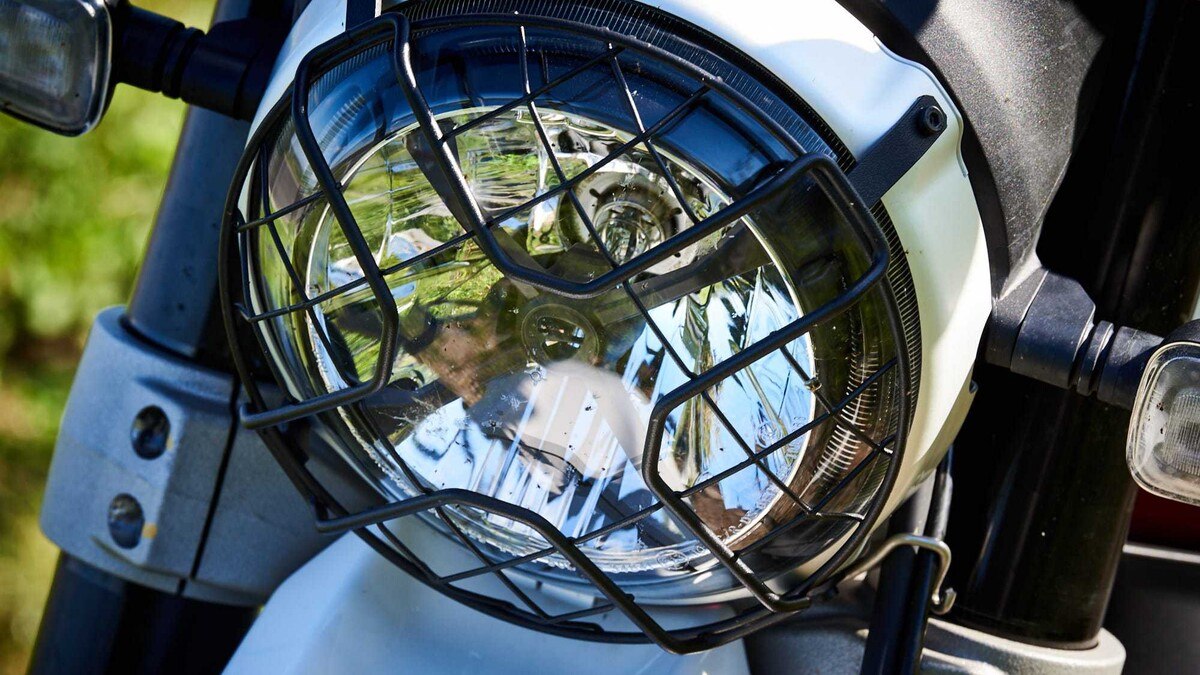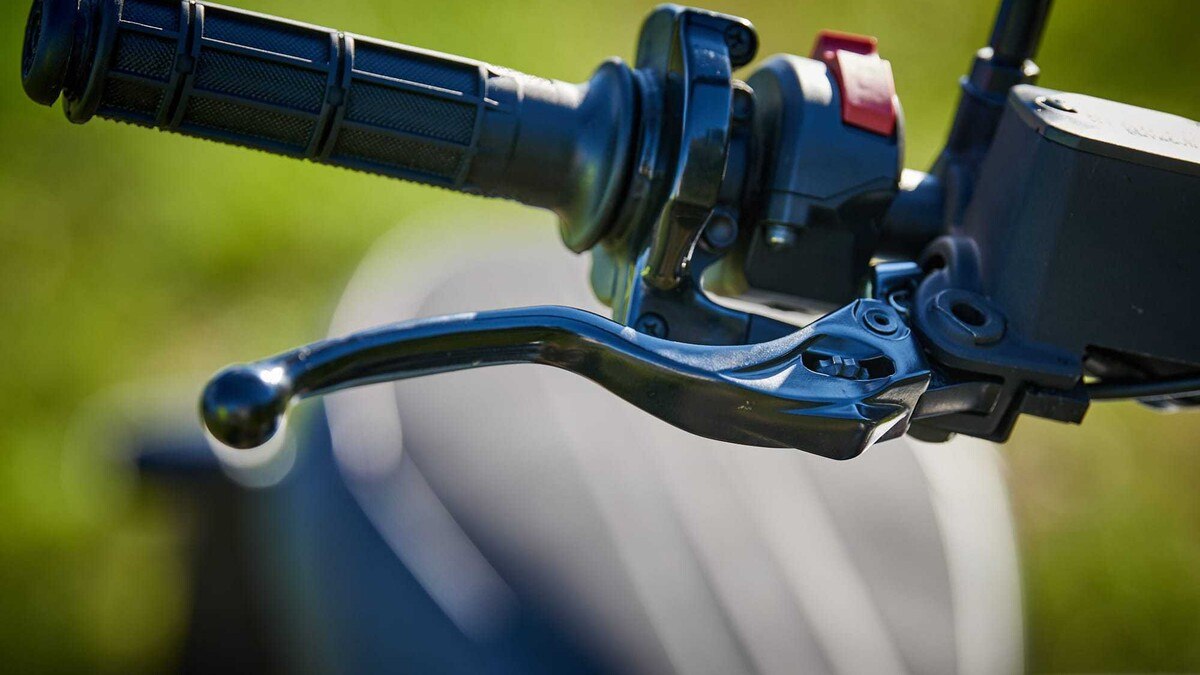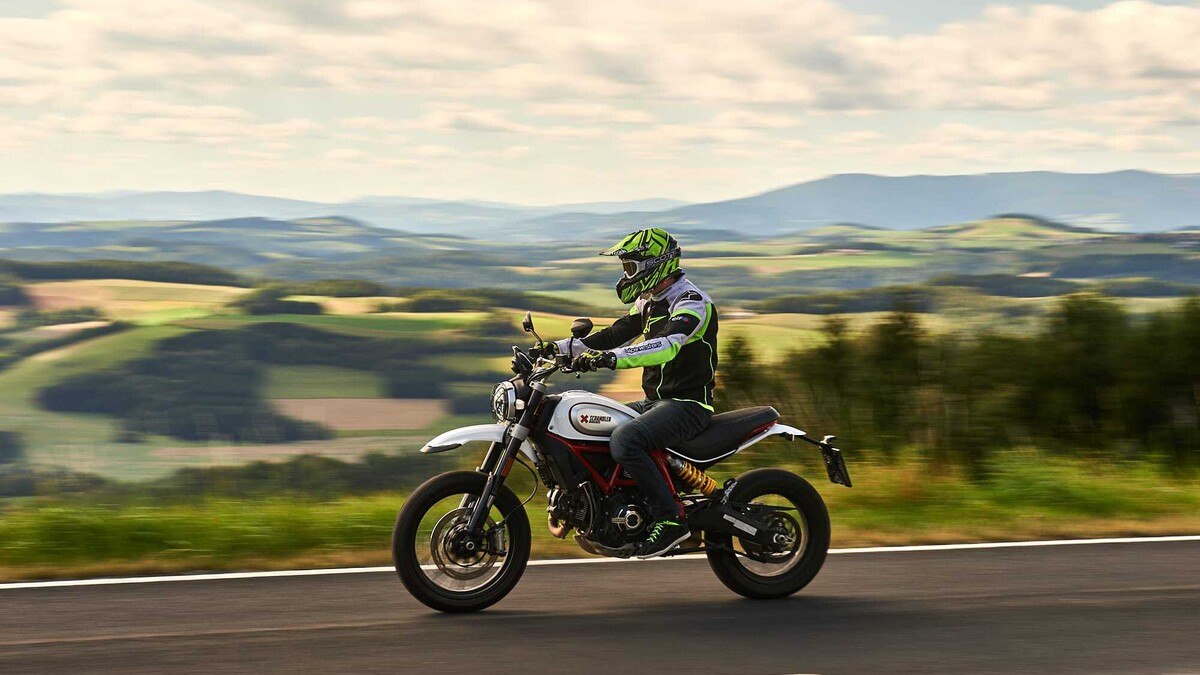Test Ducati Scrambler Desert Sled - retro carriage with dirty charm
Ducati's Scrambler models have taken fans by storm. The Desert Sled is an off-road adventure bike with retro accents and technical upgrades. Visually it's a slouch, but it's still just a compromise - even on-road.
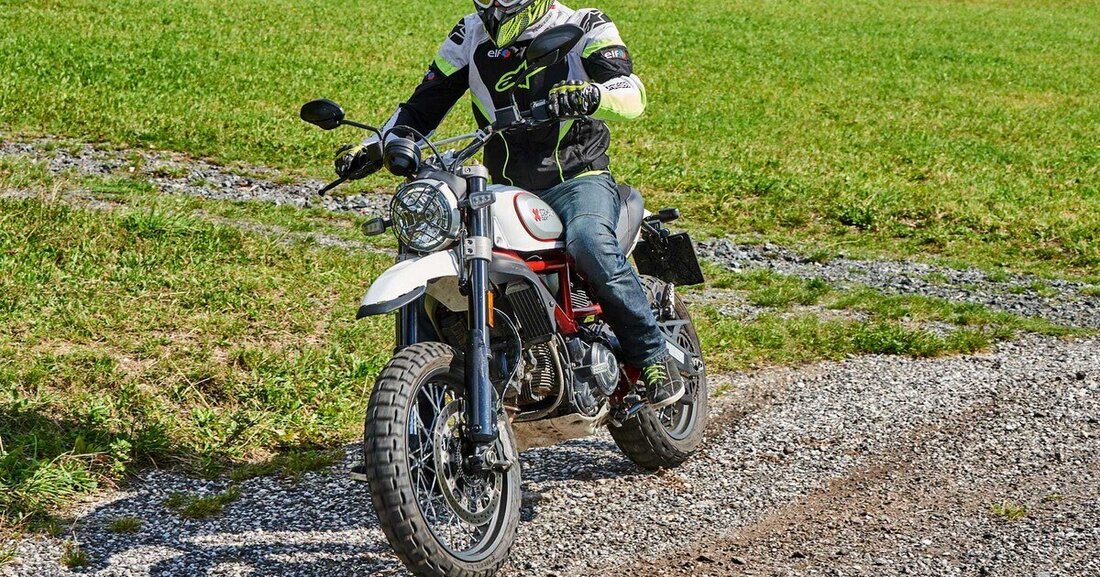
Test Ducati Scrambler Desert Sled - retro carriage with dirty charm
ergonomics
There's not much to the Ducati Scrambler Desert Sled. That's a good thing, because an adventure bike doesn't have to be a stunner. First surprise: the high saddle. The seat height measures an impressive 86 centimeters. On the normal Scrambler Icon this is only 79.8 centimeters – worlds lower. Women and smaller men will have a lot of trouble with the Desert Sled. This means that even tall scrambler fans can finally get their hands on a bike without it looking like a toy underneath them. There is no wind protection, but there is a long fender beak, a round headlight with a grille and a decentralized round speedometer that provides all the information. Questionable: The protective grille in front of the headlight is open right in the middle. Functionality? belly spot. Either completely closed so that stones have no chance at all or simply leave them out. The handlebars are wide and high and fit well in the hand. On the Desert Sled the rider sits very upright, like on a travel enduro. The mirrors don't offer much rearward visibility as there is more mirror surface on the inside than on the edges. If you like to marvel at your elbows – perfect. The tank is narrow, flat and compact (13.5 liter capacity), the saddle is comfortable and also a little wider in the crotch area than expected. The footrest position is relaxed. Typical off-road bike: The gear lever is slightly raised so that you can still shift gears even when standing and with thicker enduro boots. If you know that you will only be moving your Desert Sled a little off-road, you can lower the gear lever.
Handling
The first few meters in the Desert Sled saddle are unusual. Because: On the one hand, the Ducati drives very light-footed and nimble, but the comparatively coarse enduro tires (Pirelli Scorpion Rally STR) walk quite well on the road. It takes a few kilometers to get used to the rough rubber. Surprising: The off-road chassis is not as soft as expected. There is actually no wind protection, which means you have to strain your neck muscles at speeds of 120 km/h. Described differently: The Desert Sled is completely foolproof and easy to drive, except for the tires. Weight ready to drive: 209 kilograms.
Engine/transmission
As with the other 800 models, the heart of the Scrambler is a two-cylinder engine, air-cooled, with two valves per cylinder and oil-air cooling. The engine produces 73 hp and 67 Newton meters of torque from 803 cubic meters. That reads more unspectacular than it feels. Because the Vauzwo delivers smooth thrust from around 3000 revolutions with a good boom in the middle of the speed. The Scrambler pulls well up to 140 km/h. Due to its design, the engine has its strengths in the middle. Not too much happens at the top anymore. You drive the Desert Sled in a torque-oriented manner. She doesn't like speed orgies. The sound is typical Ducati: potent, bassy. But because of Euro 4, not as emotional as before. Nevertheless: For a standard exhaust, this sounds quite good. There are two driving modes to choose from: Journey and Offroad. The standard mode should be Journey, while off-road the throttle response is softer and the engine responds more smoothly. Ducati has given the Desert Sled an anti-hopping clutch that works perfectly. Shifting is done conventionally without a quickshifter. The transmission can be shifted discreetly, well and precisely. You can also quickly find idle. But: The gear ratio is clearly intended for everyday road use. First gear is too long for an off-road motorcycle. If you want to drive downhill with it, the Scrambler quickly builds up higher speeds because the engine braking is too low. If you want to drive downhill at walking speed on loose surfaces, you have to constantly brake. And 209 kilograms plus the driver would like to be delayed first. Noticed negatively: the small tank. The Scrambler didn't seem particularly thirsty, but after around 200 kilometers it needed a gas station. Positively noticed: The Desert Sled is a very good wheelie bike. There is no traction control. And that's a good thing.
Undercarriage
The Scrambler Desert Sled has a chassis raised by 50 millimeters and a different frame than the Icon series. At the front, a 46 mm Kayaba USD fork is used, fully adjustable, 200 millimeters of travel. And the fork definitely shows potential in the test. I was expecting a buttery-soft off-road fork, but on the road it dips noticeably when braking, but not as undamped and quickly as expected. Nevertheless, the fork responds well on light terrain and absorbs the roughest bumps. There is also a Kayaba damper at the rear, also with 200 millimeters of suspension travel. Preload and rebound are adjustable. Despite the lack of wind protection, the upright seating position and the coarse tires, the Scrambler runs stubbornly straight and has no handlebar flapping - not even on the highway. All in all, the chassis is a pleasingly good compromise between a road and light off-road motorcycle with reassuring reserves.
Brakes
I was even more skeptical about the brakes. The individual brake discs with a diameter of 330 millimeters at the front are gripped by a radially mounted Brembo caliper, but the bite is, as expected, rather gentle. Nevertheless, the delay is transparent and good. The initial, sporty bite that street motorcycles are used to is missing. On the other hand, the fork doesn't collapse under you so quickly because the brake bites more progressively. The feel of the brake lever could be more precise and crisper, but it makes it easier to ride off-road. Here, too, you have to keep the broad intended use in mind. Great: Ducati has given the Desert Sled the Bosch 9.1MP cornering ABS, which means you can safely step into the shoes under almost any circumstance without having to worry about the front wheel slipping away at lightning speed. The rear brake does what it is supposed to and can be controlled solidly. The delay is slightly above average.
Noticed
How much Ducati puts effort into the workmanship and design of the Scrambler series. The aluminum tank panels are nicely done, as are the brake lever, saddle and speedometer. All in all, it looks nice and the Desert Sled in particular offers good, adjustable chassis. The engine feels more agile and powerful than the brochure offers.
Failed
The strange routing of the front brake line with a high arc over the speedometer. Why? The mirrors are a joke. The headlight grille with the hole in the middle is simply a bad design.
Test verdict Ducati Scrambler Desert Sled 800, by p.bednar
More information about Ducati Scrambler Desert Sled
With kind support from TOTAL Austria
More action photos from the test drives can be found on Instagram: apex_moto_at
Or follow us on Facebook: Apex Moto

 Suche
Suche
 Mein Konto
Mein Konto
